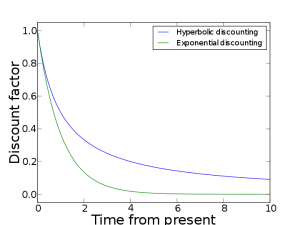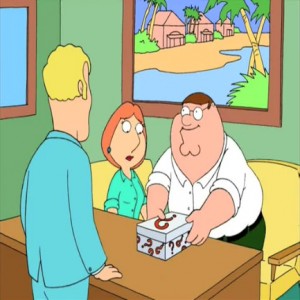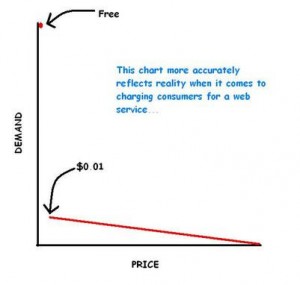How Important Are Impulse Buyers To PlayStation Home?
by NorseGamer, HSM Editor-in-Chief
The industry I’ve spent the last decade in — luxury fractional resort development and sales — is very much a “today” business. You either accept that and become very adept at building urgency, or you find yourself in another line of work.
Needless to say, it’s a high-stress field. I have been lied to tens of thousands of times. I’ve had clients, considering six-figure investments, get up from the table, shouting and red-faced, when I tell them that it’s a today-only deal. The burnout rate in my industry is insanely high, and everyone — employee and client alike — screams for more leniency.
Here’s the problem, though: it doesn’t work.
Just as Winston Churchill once famously said of democracy that it’s the worst form of government that actually works, so impulse sales techniques are the worst form of selling a commodity that actually works. And this is quite important for PlayStation Home developers to remember, as the marketplace is much more crowded than it used to be.
2012 has seen a ridiculous avalanche of content released already, and the year still has some legitimately Brobdingnagian projects still to come. The days of scouring Home’s stores — all of them — searching in vain for just one new item, are long gone. Developers no longer have the luxury of months of visibility in an uncontested marketplace; one need only look at recent product releases to see just how fast-paced everything is.
Consider: in recent days, VEEMEE’s No Man’s Land was released to much fanfare and discussion — mostly centering around its pricing structure — followed in rapid succession by Lockwood’s PODI, multiplayer MiniBots from Juggernaut, nDreams’ Blueprint:Home, and now video poker from Digital Leisure as well as Heavy Water’s Avalon Keep.
There’s so much content being thrown at the Home consumer, in rapid succession, that it’s actually changing how developers market their virtual commodities. Preview hype, sometimes months in advance, is becoming increasingly common. Overt community outreach is practically a necessity. And there have been various experiments with pricing to see what formats have the greatest “stickiness” with Home consumers.
What I find fascinating to study, though, is how much pressure developers must be under now to crush their sales targets in the first week of release, or at most the first fortnight. People absolutely vilified VEEMEE for the aggressive and in-your-face pricing structure used by No Man’s Land, but I’ll say this: they sure as hell pulled in a lot of fifty-dollar upgrades, because they had the stones to ask for it (and, since they were permanent upgrades, they were far more easily justified than the aggressive pricing used by Cutthroats.) Meanwhile, Juggernaut gave away the house on its multiplayer MiniBots, and while that won them a lot of well-deserved popularity on the Sony forum, the capricious truth is that that forum has already moved on to the Next Big Thing, and ultimately how much revenue did their generosity to the community pull in?
Hell, just look at what’s going on right now. Last week, nDreams’ Blueprint:Home — which required outside financing to pull together — was the only real topic of conversation. Now, like shifting ballast in a boat, nearly everyone (except for HSM’s own DarthGranny) has lurched over to discuss Heavy Water’s Avalon Keep. And fighting for some piece of the spotlight is LOOT’s Ultimate MIB Bundle and the new Novus Prime companions from Hellfire Games. Even the vocal Granzella fanboys have barely been visible to support the latest Great Edo content releases.
And speaking of Hellfire, what happens when Home Tycoon drops? How’d you like to be a developer going up against that monster? Or, worse, how about Lockwood’s Mercia? Christ, just the demo for Mercia crashed Home’s servers because too many people were all crowding in to play it. You really think anything else released that week has a snowball’s chance in hell of competing for the spotlight?
There’s a reason why Bigyama packed up and shifted their development efforts over to Vita: it’s a brand-new platform hungry for content, whereas Home is entering a far more mature phase (although it continues to grow), and the developers who stand to reap the greatest rewards from it are those who established themselves at least a year ago.
What this brings us back to, then, is the absolute necessity to hit the ground running with a pricing strategy that assumes you only have a week — maybe two — of front-of-mind consumer consciousness, before the Sony PR machine and consumer attention shifts elsewhere. The moment that attention shifts elsewhere, I’ll wager that the sales curve isn’t a gentle declination so much as it’s the latter half of what could be called an “Eiffel Tower effect.”
 In behavioral economics, this sort of consumer behavior is called hyperbolic discounting. In short, it has to do with the fact that humans are wired to be biased towards the present and immediate urgency. If you know you need to go to the store to buy toilet paper some time this week, that carries a very low discount rate; you might get to it today, but chances are far greater that you’ll do it later. Meanwhile, if you wake up in the morning and there’s no toilet paper anywhere in the house, that carries a very high discount rate: you have a clear and urgent motive to go buy more toilet paper.
In behavioral economics, this sort of consumer behavior is called hyperbolic discounting. In short, it has to do with the fact that humans are wired to be biased towards the present and immediate urgency. If you know you need to go to the store to buy toilet paper some time this week, that carries a very low discount rate; you might get to it today, but chances are far greater that you’ll do it later. Meanwhile, if you wake up in the morning and there’s no toilet paper anywhere in the house, that carries a very high discount rate: you have a clear and urgent motive to go buy more toilet paper.
How does this apply to Home? Simple. Assume that after the first week of release, the number of transactions you receive shows a steady declination. Sharpen this descent curve if other high-profile content is released a week later, particularly if you had a featured ad placement in the Hub.
The goal for a developer, then, is threefold:
1. Build up as much pre-launch demand as possible;
2. Have supplemental content launches (if applicable) ready to go in the week(s) following the initial release;
3. Implement sales strategies which reward impulse purchases — particularly larger impulse purchases.
The first step is already largely underway. Most of Home’s major development houses have established community managers to drive brand visibility and product PR. These people play a critical role in being the public face of the company to the consumer base, across multiple media sources. Further, there’s been an increasing shift — supported by Sony — towards pre-release hype that’s further out from the release date. Quite recently, Sony’s even taken the unprecedented step of formally allowing a community media site — this one — to break the news of a major content update for a game (Cutthroats) first, as undoubtedly part of a soft PR launch to build community buzz. These are all fantastic trends, and given the rapid pace with which content is being deployed into Home, this marketing engine should not only continue, but grow more intense.
The second step — supplemental content launches lined up — is also important because it makes the sales declination curve shallower. If we assume a new major content launch has a fortnight to stand on its own, then it is highly advisable to have a follow-up content release planned and ready to go within four weeks — preferably three — of the initial release.
An excellent example of this is Sodium2. It’s been a while since that game had a new racetrack! But Lockwood was very smart by releasing a tremendous amount of supplemental content for the game at well-timed intervals after its initial release. In so doing, they built up as many long-term users as possible while the game was still at the forefront of the consumer’s consciousness.
The catch with having additional content already set and ready to go is that that’s an additional sunk cost which needs to be recovered. To which my advice is to not be afraid of aggressive pricing. If you’re familiar with the economic theory known as the Penny Gap, then you know that it’s much harder to move someone from zero dollars to one penny than it is to move someone from one penny to one dollar — or from six dollars to ten dollars.
This is where my background in resort development starts to show through as a bias: don’t be afraid of the kids on the forum (and elsewhere) cussing you out for charging a couple of extra bucks. They’re aware that prices have inflated in Home over the years, but they’ve never bothered to realize that third-party developers have to pay a cut of their revenues to Sony as the platform provider. Coupled with the consumer demand for increasingly complex virtual experiences and commodities which have higher development costs, and you have a recipe for price increases. People can whine and kick and scream all they want, but that should not make a developer gun-shy when asking for more money.
Along the same lines: don’t give away the razor and sell the blades. This killed Cutthroats due to players being able to enjoy the game for free and ignoring the (as a result) overpriced temporary power-ups. And, personally, I think nDreams may have left money on the table with Blueprint:Home. Given how unique (and brilliant) a product it is, it should be retailing for ten dollars (particularly since they had to get outside financing just to pull it off). It’s better to have a high buy-in and cheaper add-ons than the other way around, because what people choose to buy is the concept, not the window dressing. Cutthroats probably would’ve performed better if it had taken a page from SodiumOne‘s example by giving the first five levels away for free, and then requiring a buy-in to gain access to the rest of the game.
And this brings us to the third goal — driving impulse sales early and up front — which we’re just now starting to see more of in Home. Heavy Water’s Avalon Keep is a perfect example of this: they have a crystal crown, as a piece of virtual clothing, for any user account which acquires Avalon Keep within the first thirty days of its release. And I was actually shouting words of encouragement at my computer screen when I first saw this, because it shows that somebody’s on the right track.
In fractional resort sales, the client is offered purchase incentives to consummate the deal on the same day. Again, people will kick and scream, but it works. Who cares if the client stops using the virtual commodity a year, a month or a day after they bought it? The point is that they were emotionally moved to actually buy the damn thing, which means they now have a motive to try to justify that purchase by using it — particularly since Home’s virtual commodities cannot be deleted from a user account and have no resale value.
 Offering purchase incentives to move a client from procrastination to action is nothing new at all. It exists because it takes that hyperbolic discount rate and moves the urgency all the way up to screaming. And in a crowded marketplace, that’s absolutely necessary — particularly in the case of Home, where the consumer knows that that same virtual commodity is going to still be available, at the same (or possibly reduced) price, months and years from now. The very selling point that Sony uses to entice developers to create content for the Home platform — that said content can monetize for years on end — has to be counterbalanced with the fact that nearly all of Home’s virtual commodities (except for some highly unusual evergreens, such as LOOT’s portable EOD televisions) are going to see the bulk of their transactions within the first two weeks of release.
Offering purchase incentives to move a client from procrastination to action is nothing new at all. It exists because it takes that hyperbolic discount rate and moves the urgency all the way up to screaming. And in a crowded marketplace, that’s absolutely necessary — particularly in the case of Home, where the consumer knows that that same virtual commodity is going to still be available, at the same (or possibly reduced) price, months and years from now. The very selling point that Sony uses to entice developers to create content for the Home platform — that said content can monetize for years on end — has to be counterbalanced with the fact that nearly all of Home’s virtual commodities (except for some highly unusual evergreens, such as LOOT’s portable EOD televisions) are going to see the bulk of their transactions within the first two weeks of release.
Frankly, if there’s anything I can criticize about Heavy Water’s early-adopter promotion for Avalon Keep, it’s that they didn’t go far enough. Home consumers do strange things for reward items, but the incentive should scale upward when attempting to sell a more expensive commodity.
What I’ve had in the back of my mind: I’m waiting for a developer in Home to announce, pre-release, that they have a hot commodity which is going to be sold for X price for the first thirty days. After that, the price is increased to Y instead of X. Essentially, it’s an early-adopter discount — but what it does is create real urgency which will drive word-of-mouth referral marketing.
I’ll give you an example. Remember when the Lockwood MechJets came out? At ten dollars, they retailed for a fairly healthy price tag — and Lockwood had done an excellent job of pre-release marketing, building up the value in the outfit so that they could drive an aggressive price. And if you recall, on release day, there was a brief computer pricing error that allowed a handful of people with incredibly good timing to grab the MechJets for only a few dollars.
Predictably, the forums blew up. But what was interesting was that people weren’t upset about the pricing error — they were upset that someone else had gotten a better deal for no reason other than blind, dumb luck. It violated any sense of “fairness” — a word which is often used when someone isn’t the benefactor from a particular situation.
But what if a developer offered a unilateral early-adopter discount for, say, the first thirty days of a product’s release — letting everyone know up front that the price would go up after that promotion had ended? How would that drive urgency and sales?
So this is the challenge I would put forth: brainstorm early-adopter incentives for various types of commodities. It doesn’t matter if it’s a game, an estate, a piece of clothing or something else: the point is to advertise, ahead of time, that there are rewards for those who jump in first with exclusive benefits. This will help to drive impulse sales, which are likely far more important to Home’s economy than anyone suspects.







 LinkedIn
LinkedIn Twitter
Twitter
Though much of what you said here is over my head and above my pay grade I understand the need for developers to get their products to the forefront in the minds of the consumers in Home quickly. With the avalanche of content coming in weekly now, each new product is fighting for its share of the pie. I know that my “virtual” dollars are spent wisely and carefully, so when I get excited about something like Blueprint or Avalon ahead of time because of the marketing strategies used, that is a good thing for the companies involved because they will get my money the day it comes out.
You are right about content releases too. The only way that any developers are going to keep people coming back is timed releases of new upgrades and content. Ndreams is doing that quite well with that one for BluePrint. I can only hope that everyone else follows suit.
Good article Norse. you are right “on the money” as always.
I love you as much as I … ” not so love” you lol.
Your just too good at that. I want Home to succeed but a bit affraid of the result if every dev listen to each of your advice. Some customer will have to take a 2nd mortgage just to meet their PsHome needs.
Good article, as always. I agree about Blueprint. Sales numbers would probably had been much the same at $10 instead of $8.
Now one thing I would LOVE to hear you talk about is a way to “flatten” the hyperbolic curve in long term. There is new user on Home every day. How do I make sure the new gal/guy feel she/he must buy my product in 6 months?, a year?…
And how about S2. How you name that strategy, beside freemium.
So many questions, so little time…
Wait no longer for the “early-adopter discount” Norse. Granzella already did it in Japan with the Hot Beach for Two personal space.
500 yen for the first month
700 yen afterward
We may not know how well the strategy worked unless they repeat the tactic again in Japan or elsewhere.
Various sales tricks are coming into play, Granzellas reduced price beach for first 30 days, Avalons exclusive reward first 30 days, exclusive content only to be sold at E3 ( which was a scam because all the developers did was release it in different colours afterwards ) Apartments with matching furniture rewards , ( Are rewards really rewards when you have to do nothing to get them ). Cutthroats had some clever sales ideas like two crystal skull rewards but if you want the set you have to pay dollars for them, plus in game currency it would be interesting to see how much of that in game currency sold on the first day of release before people released you dont need it. but then you are stuck spending it. Developers and marketing now thats quite funny, Summer clothes in EU region for instance which has southern hemisphere countries in it, ( they summer is December and is now finished ), lets call a furniture brand cucumber and not expect people to say im sitting on a cucumber, obviously not much money spent on marketing or branding, Thing is, as prices go up people will buy less by impulse and think harder about purchases, I just did by not buying blueprint, because I like spaces with atmosphere and there was a level of disappointment with the purchase from people I knew bought it, All ive heard is good things about avalon keep so ill probably buy it, where before Id be the first to buy it but now the prices are higher my purchases are more considered. 30 days is still enough to review items before purchasing but home isnt stable enough to go much shorter plus developers still want to sell they products, imagine day of release rewards or discount when server overload kicks in and you cant buy it.
You’re an aggressive man in your business Norse! That’s not a put-down by the way (heh, it’s not exactly a compliment either) but it’s clear to me you’re probably one of the best in your firm/company. But I don’t like these tricky tactics, they seem underhanded, unfair and yeah, pretty damn sly. Maybe I’m just old fashioned when it comes to money, but the gaming industry has been using these “early adopter deals” for a while now and you know what I see when I’m faced with “only today extras”? I see a faceless company that wants to rinse me of as much money as it can, as fast as it can.
“Only for today a limited time huh? Maybe I should just drop my pants and bend over right now then, or is it to be a surprise!?”
Going by the stupidity of the charts regarding the X7 fiasco, where the ENTRY TICKET outsold anything else that would allow forevermore access I can only come to the conclusion that most Home spenders are in fact, thick as dog’s *business* on a cold day.
You clearly enjoy studying this kind of business strategy, and Home is a microcosm for it but much other “incentives” cropping up in the games industry it saddens me that just for a better Eiffel curve, we’re all getting treated as robotic stats rather than good, returning (and more importantly) valued customers.
Maybe a “how not to fall for a marketing scam” article once in a while?
Generally speaking, it only feels manipulative once the curtain is pulled back; sales strategies are most effective when disguised with proper marketing.
The hard part for us all to remember is that ultimately we are simply numbers on a spreadsheet, regardless of what business or industry we’re discussing. The companies that build the best loyalty are the ones who are the most successful at making you feel like something more than that. Indeed, it is a valid criticism to point out that while SCEA Home has gotten very adept at offering a blizzard of content for sale, their lack of community-fostering events in world (which, granted, come at a cost) has made it feel like a giant carnival with no soul. While this will save money in the short term, it creates a vulnerability in consumer loyalty which a competing product will be able to easily exploit.
Exactly. That brand loyalty is within most of us, in fact gamer fanboys are some of the most brand loyal fans out there. I spoke to a person in Home just yesterday, in the Gamescon space, he was talking about how super wonderful Sony was compared to the other “gaming” companies. He was so vehement about it he wad nearly turning biblical. Sony’s own equivalent of the street corner preacher!
Sony (and the other devs) wouldn’t have to try hard to make Home users feel appreciated really, but (I feel) it’s rather lacking in that department.
Sorry for double posting but I felt the need to point out that Digital Leisure do an extremely good job of making their customers feel that they matter, but they seem to understand how important word-of-mouth is.
“Cutthroats probably would’ve performed better if it had taken a page from SodiumOne‘s example by giving the first five levels away for free, and then requiring a buy-in to gain access to the rest of the game.”
I doubt that this tactic would have worked for Cutthroats because levels 6-31 are exactly the same as levels 1-5. SodiumOne’s levels became progressively more challenging with upgraded equipment.
The only incentive to play past level 5 in Cutthroats are the rewards, which are not really worth much.
I probably should have elaborated on that point; if the game was structured as pay-to-access, with permanent instead of temporary upgrades unlocked at specific levels, the first five levels could have been offered for free. Someone could keep playing, but there would have been no further progression towards upgrades.
Would this have created a lopsided playing field? Sure. But even the strongest boat, fully crewed, still has a limit to how long it can last in constant firefights. And the experience boost for finally sinking one would help propel lower-ranked players further up.
(Granted, it’s a moot point now, given what’s coming for Cutthroats, but I do wonder how the game would have performed if it was structured with a different financial model behind it.)
Break it down, down Big Kahuna!
Norse, I agree with what you said about the community fostering events in the KrazyFace post. You know they have a potential for some of us leaving without a sense of community. (I would say that community is the number one reason for me being on home- and I am in that sweet spot demographic of professional women -with spending income -that they truly want to reach just now).
But also -take note -they are not in the business for good will… how would their employees eat?
I have no buying remorse what so ever… let me just say this. I spent like what? then bucks on the gift machine for a male friend’s birthday. Man if this were real life I think it would take twice that to get a store bought present that I was proud enough to give him. (a decent card would cost me $5) Yet I practically bought out the machine and made a very down person -who thought everyone forgot his birthday -very extremely happy.
Same with games… how many hours of entertainment do you get from a game?- I pay 20 plus to see a movie with a friend for two hours in which I am merely a spectator. In games I get to participate in a story (concept borrowed from Bon’s previous article).
I mean all things relative this could be the guy sitting in the lazy-e-boy in an airplane partaking in the miracle of flight and complaining that he doesn’t have peanuts.
But on the other hand…
Fostering a sense of consumer loyalty is extremely important to this particular cross section of people- those of us with hard earned money to spend would rather spend it where it might do some good.
Lockwood’s endangered species is a prime example of this. Whenever I have my companions out and someone comments on them I be sure to tell them that money is going to charity when they purchase.
And I just wanna buy more from them because I really dig that they are doing this. (thanks for the article on that btw Bon).
Most gamers with money are not stupid. I think most of them can see blatant marketing tactics. When you catch a company at it it fosters a sense of distrust instead of loyalty.
I would warn psh marketers to be wary of that fine line. I think here on psh they are marketing to an intelligent group of people that feel the need to join another kind of reality often because they have felt victimized in the greater world. To fleece them here would be a sorry mistake.